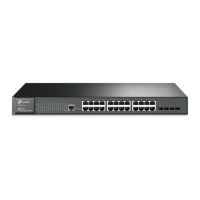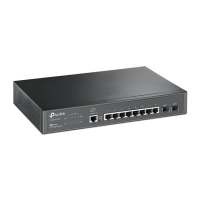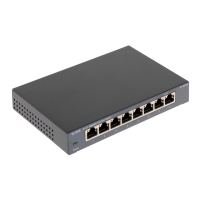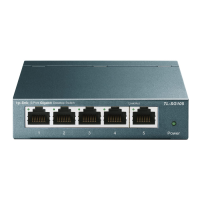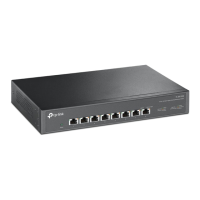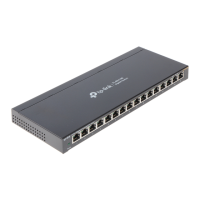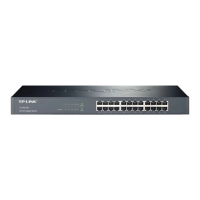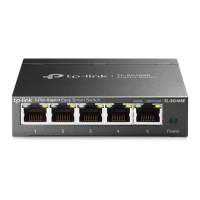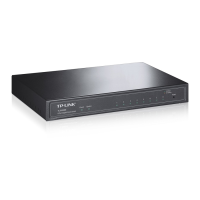other entries.
13.2.3 ND Snooping
ND snooping maintains an ND snooping table using the DAD NS messages in IPv6. ND snooping
entries in this table is used to:
• Cooperate with the IPv6-MAC binding.
• Cooperate with the ND detection feature.
• Cooperate with the IPv6 Source Guard feature.
1. Creating an ND snooping entry
The switch only uses received DAD NS messages to create ND snooping entries.
2. Updating an ND snooping entry
Upon receiving an ND packet, the switch searches the ND snooping table for an entry containing
the source IPv6 address of the packet. The switch matches the ND packet’s MAC address and
the receiving port against that in the entry.
• If both of them match those in the entry, the switch updates the aging time in this ND snooping
entry.
• If neither of them matches the entry, the switch initiates a verification process.
1) The switch checks the validity of the existing ND snooping entry.
The switch sends out an NS message according to the ND snooping entry. If a
corresponding NA message (whose source IPv6 address, source MAC address, receiving
port, and source VLAN are consistent with those of the existing entry) is received, the
device updates the aging time of the existing entry. If no corresponding NA message is
received within one second after the NS message is sent, the device starts to check the
validity of the received ND packet.
2) The switch checks the validity of the received ND packet.
The switch sends out an NS message to verify the reachability of the ND packet (marked
as packet A). The NS message’s destination IPv6 address is specified as the source IPv6
address of packet A. If a corresponding NA message (whose source IPv6 address, source
MAC address, receiving port, and source VLAN are consistent with those of packet A) is
received, the switch updates the existing entry. If no corresponding NA message is
received within one second after the NS message is sent, the switch deletes the entry.
3. Aging out an ND snooping entry
An ND snooping entry is aged out after 120 minutes. If an ND snooping entry is not updated
within 60 minutes, the switch initiates a verification. The switch sends out an NS message
including the IPv6 address of the ND snooping entry.
• If a corresponding NA message is received (the source IPv6 address, source MAC address,
receiving port, and source VLAN are consistent with those of the existing entry), the switch
updates the aging time of the existing entry.
• If no corresponding NA message is received within one second after the NS message is sent
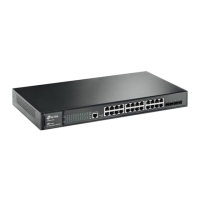
